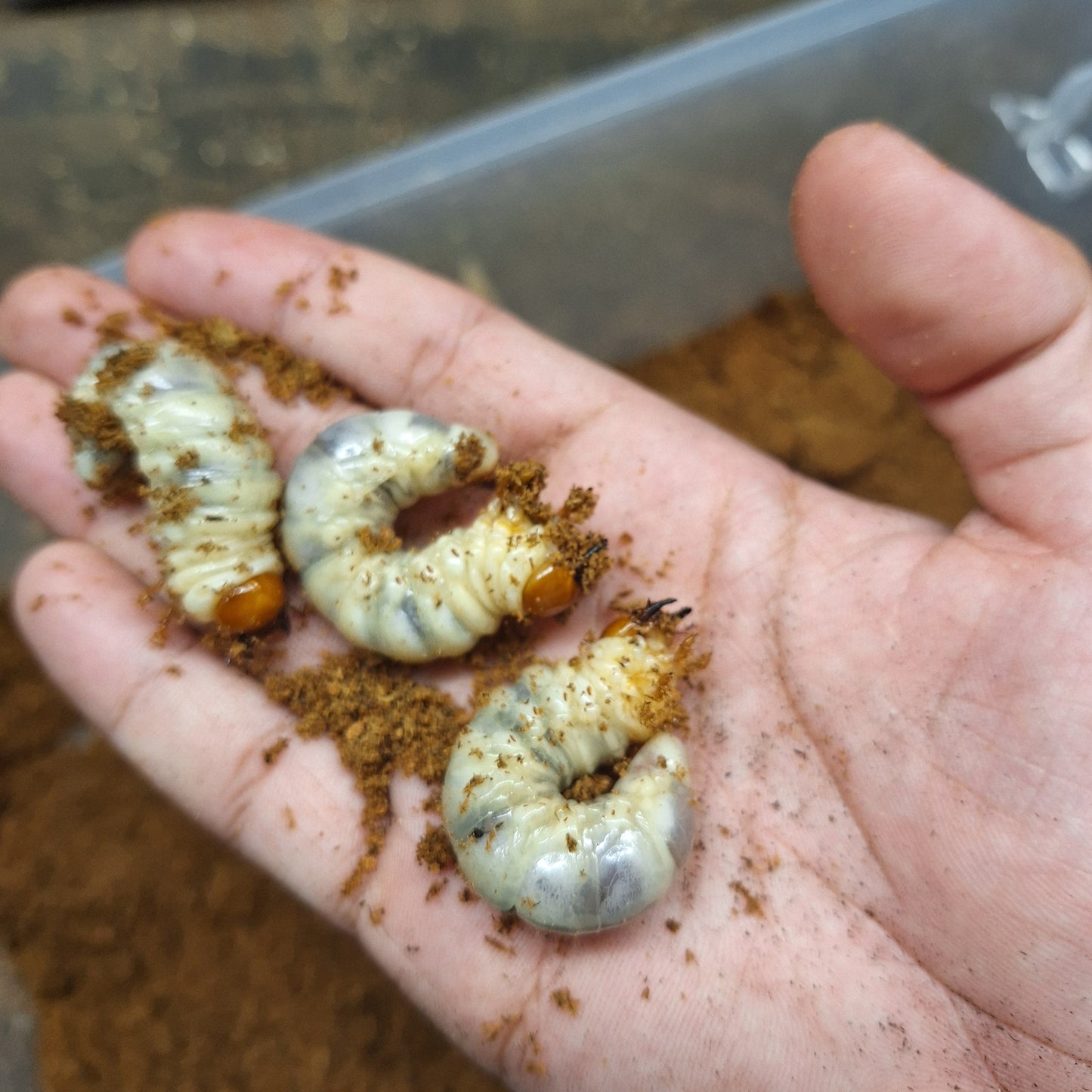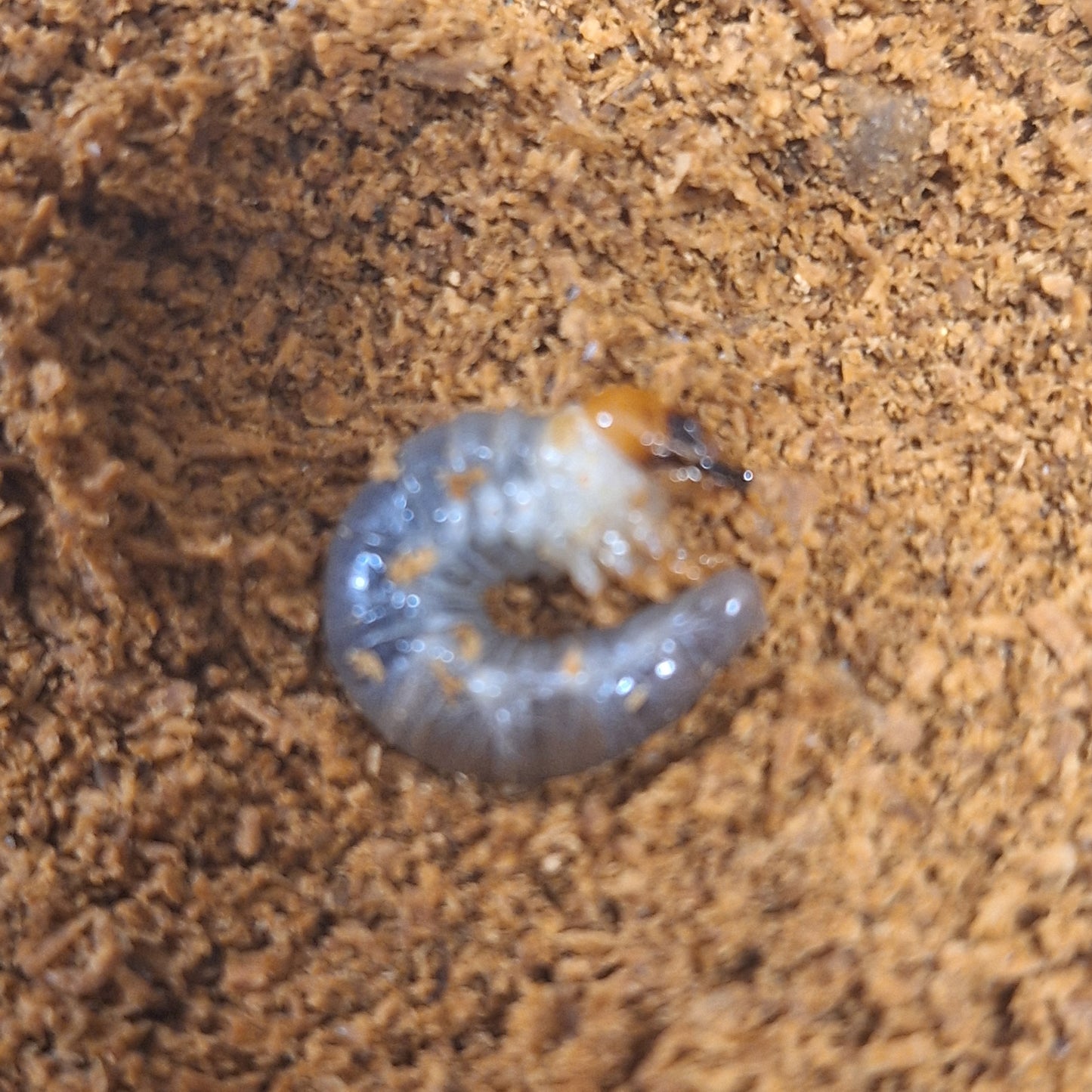THEBEETLEBIN
Giant stag beetle [Lucanus elaphus larvae]
Giant stag beetle [Lucanus elaphus larvae]
Couldn't load pickup availability
You will receive a Lucanus elaphus larvae with enough flake soil to last it a few weeks
Caring for Lucanus elaphus larvae, commonly known as the giant stag beetle larvae, requires attention to their habitat, diet, and environmental conditions. Here’s a care guide to help you:
### Habitat Setup:
1. **Enclosure**: Use a plastic container or glass terrarium that is spacious enough for the larvae to move around freely.
2. **Substrate**: Provide a substrate of moistened flake soil sawdust or top soil with rotting wood chips. This mimics their natural environment and helps maintain humidity.
3. **Humidity**: Keep the substrate consistently moist but not waterlogged. Use a spray bottle to mist the substrate regularly to maintain humidity levels.
### Diet:
1. **Primary Food**: Lucanus elaphus larvae are wood-feeders. Provide them with decaying hardwood such as oak, maple, or beech. This can be substituted with fermented sawdust also known as flake soil
2. **Feeding Schedule**: Replace the wood regularly to ensure they have access to fresh, decomposing material. Larvae will burrow into the wood to feed.
### Temperature and Lighting:
1. **Temperature**: Keep the enclosure at room temperature (around 20-25°C or 68-77°F). Avoid sudden temperature fluctuations.
2. **Lighting**: They prefer low light conditions, so keep the enclosure in a shaded area away from direct sunlight.
### Handling:
1. **Minimal Handling**: Avoid handling the larvae unnecessarily as they can be sensitive to stress.
2. **Cleaning**: changethe out the larvaes soil once it fills with frass pelletsto provide maximum growthconditions.
### Development Stages:
1. **Growth**: Lucanus elaphus larvae go through several stages (instars) as they grow. Provide adequate space and food to accommodate their increasing size.
2. **Pupation**: Eventually, the larvae will pupate and transform into pupae. Provide a suitable substrate (like moist flake soil) for pupation, which occurs before they emerge as adult beetles.
### Additional Tips:
- **Observation**: Monitor the larvae regularly to ensure they are active and feeding. Changes in behavior or appearance can indicate health issues.
By following these guidelines, you can create a suitable environment for Lucanus elaphus larvae and observe their fascinating growth from larvae to adult beetles.
Share
![Giant stag beetle [Lucanus elaphus larvae] for sale](http://thebeetlebin.net/cdn/shop/files/20240724-175626.jpg?v=1739571162&width=1445)



![Giant stag beetle [Lucanus elaphus larvae] for sale](http://thebeetlebin.net/cdn/shop/files/20240724-175626.jpg?v=1739571162&width=1946)